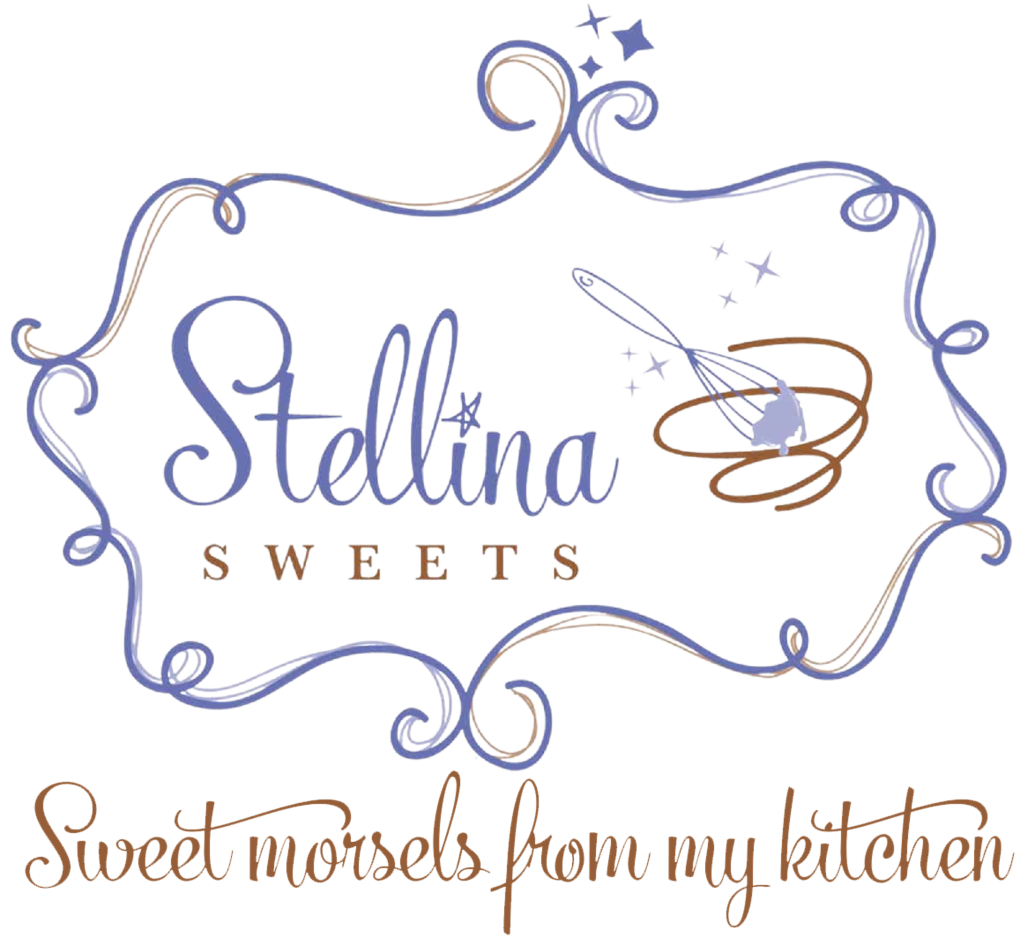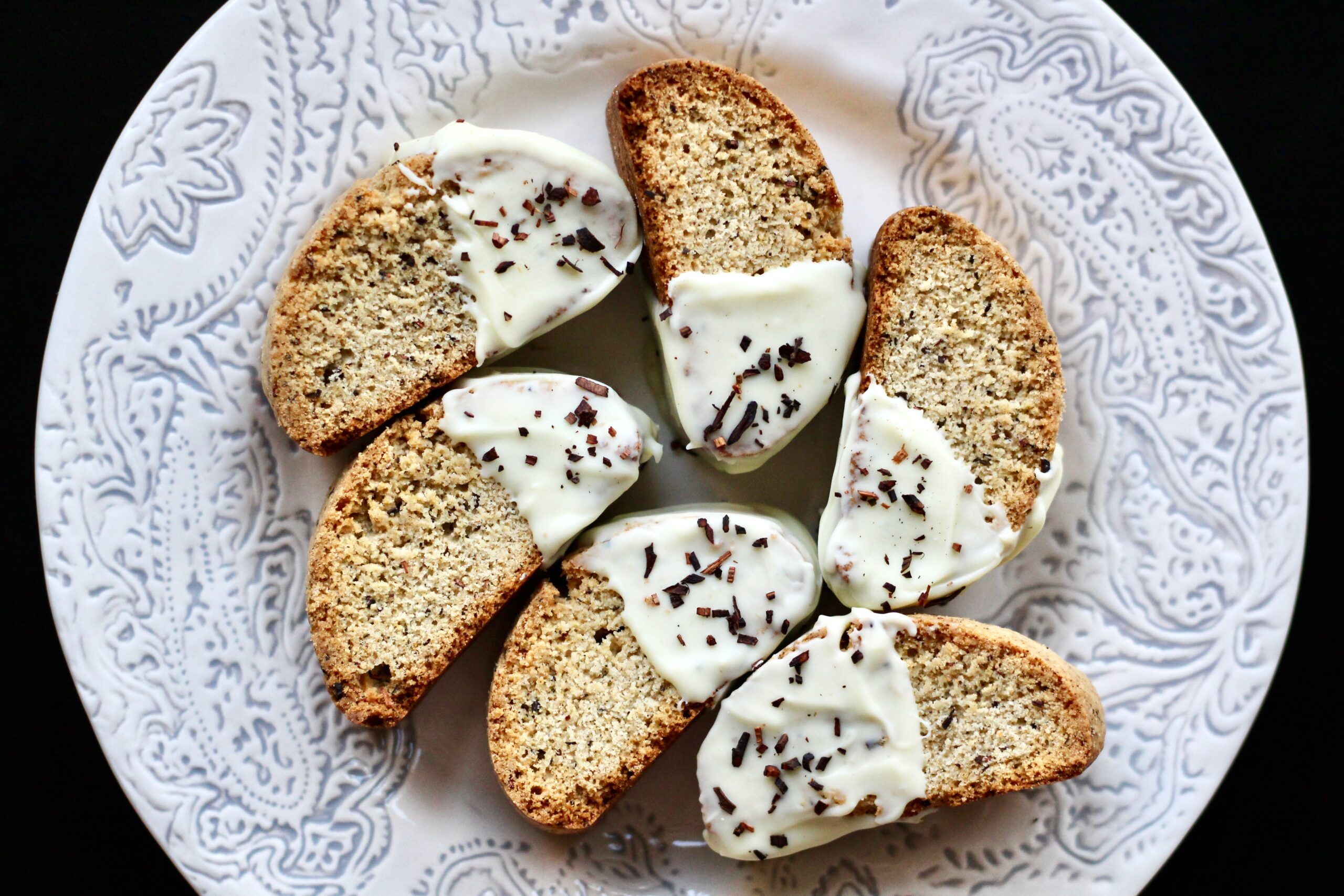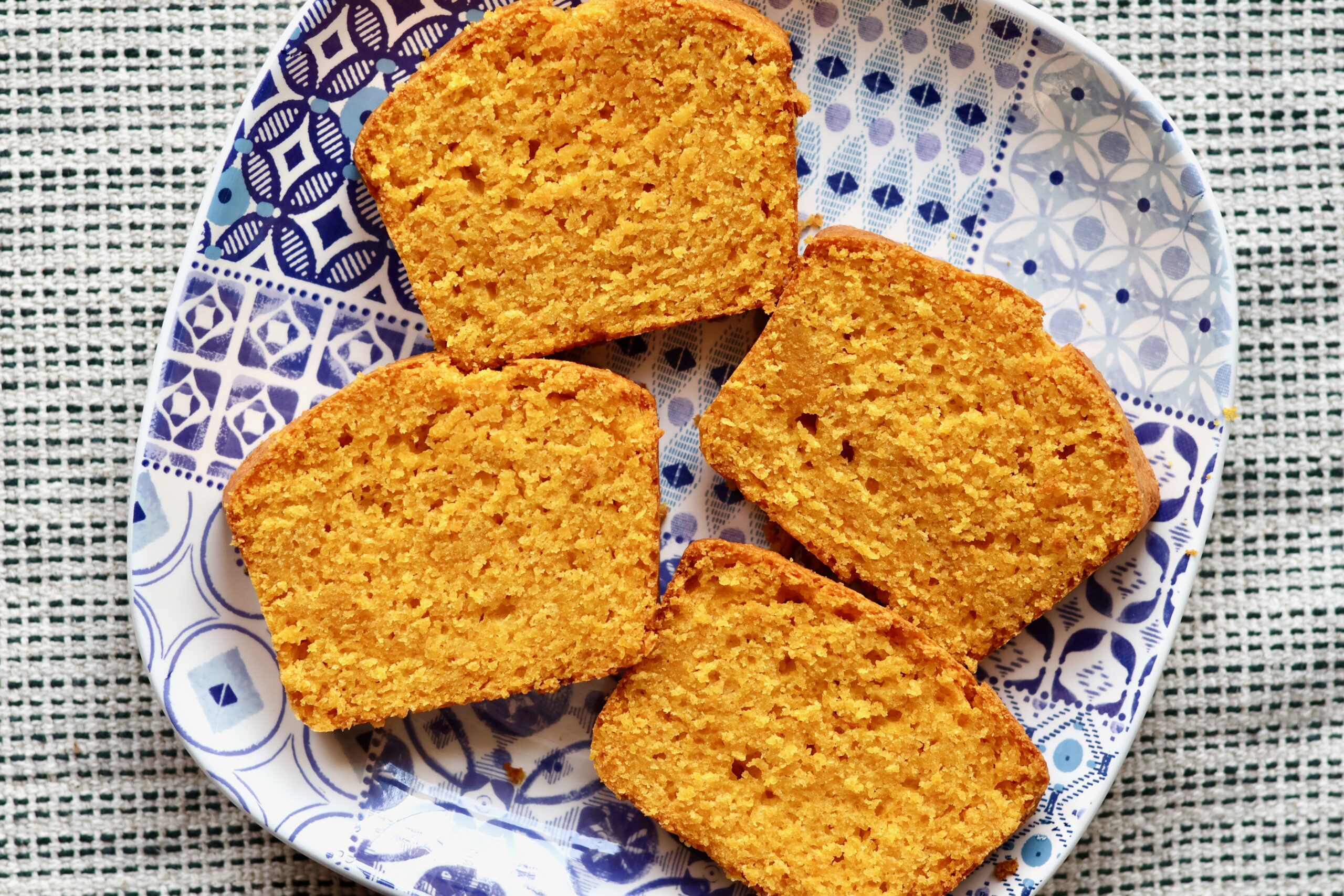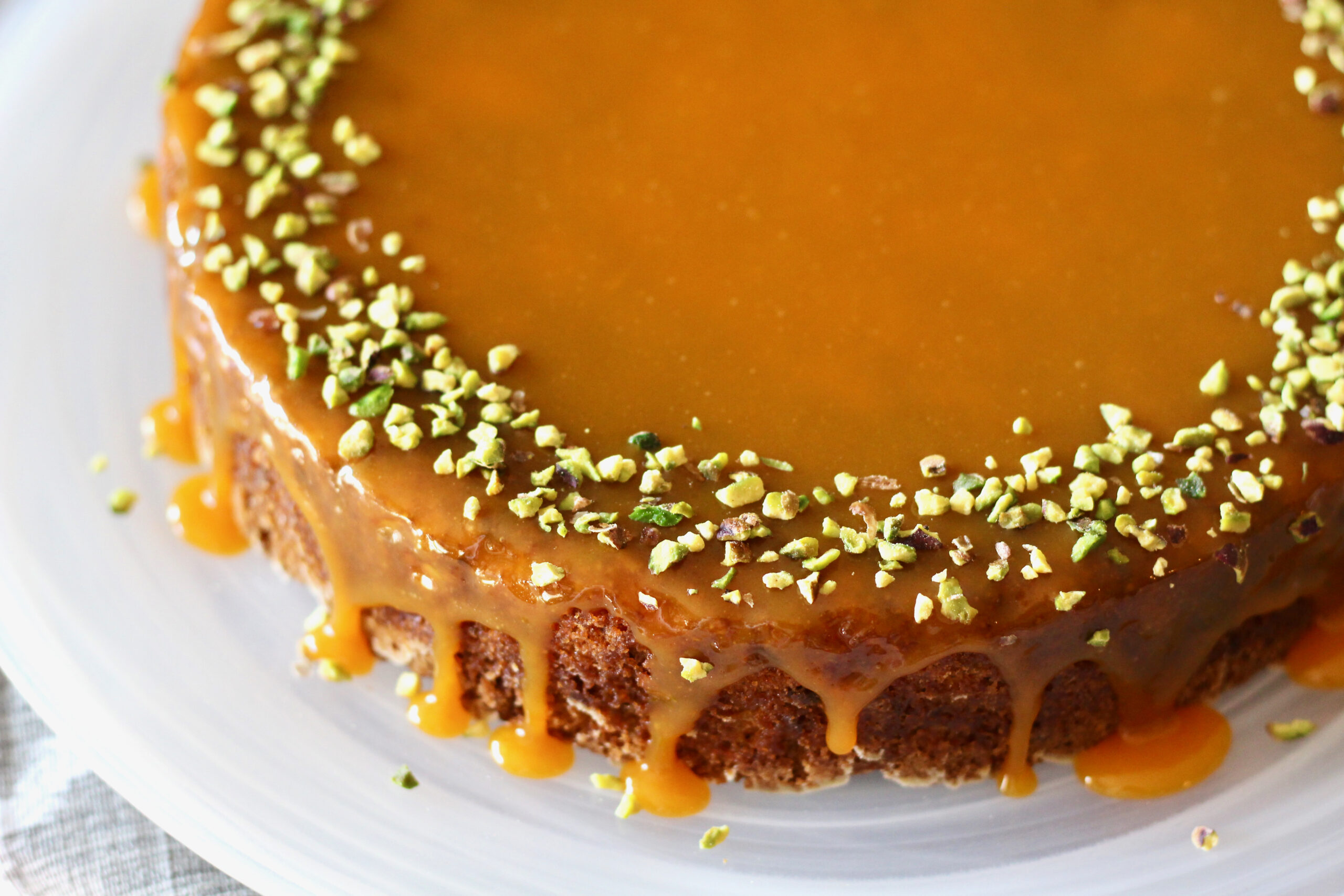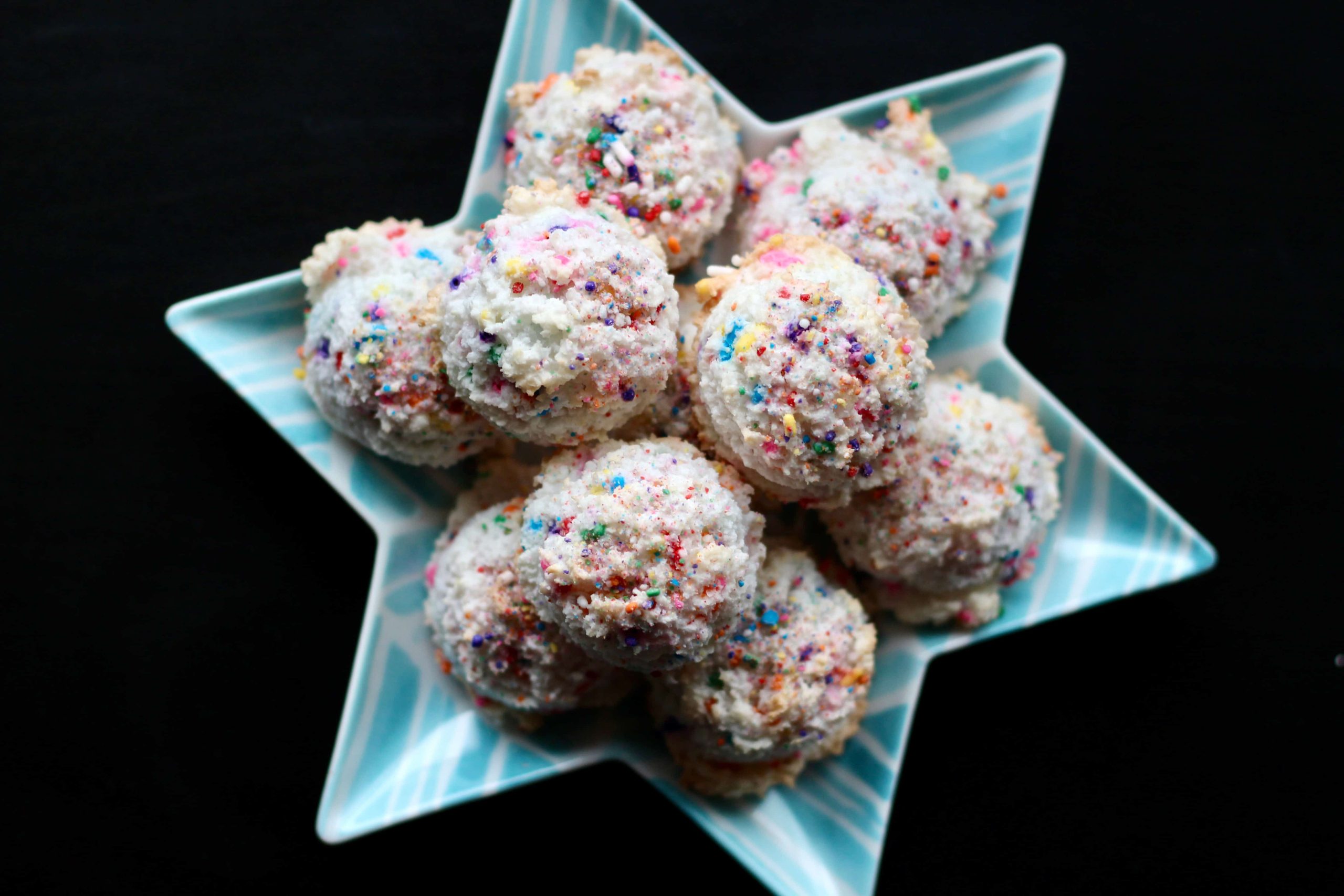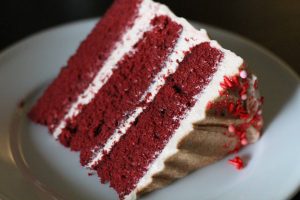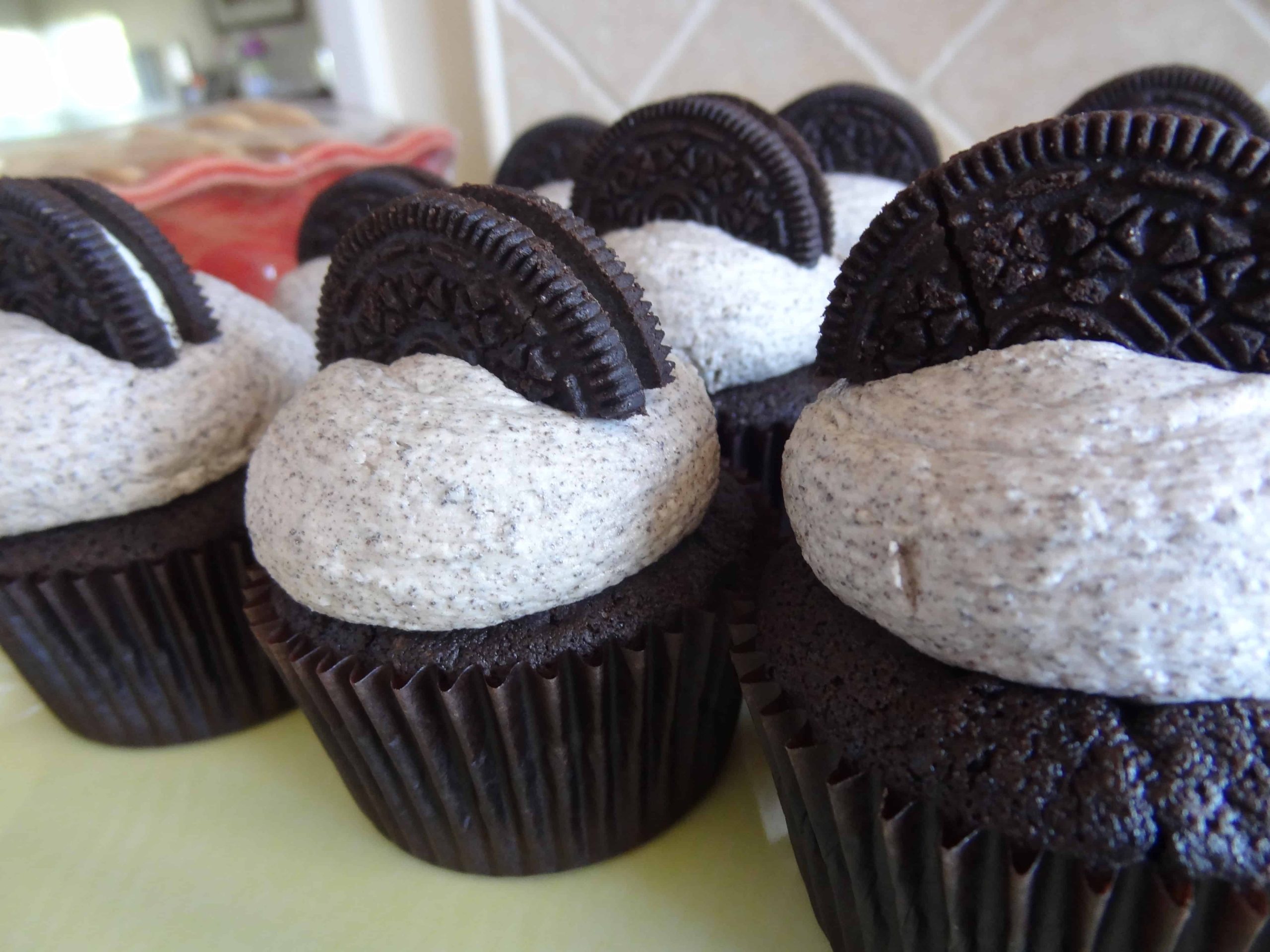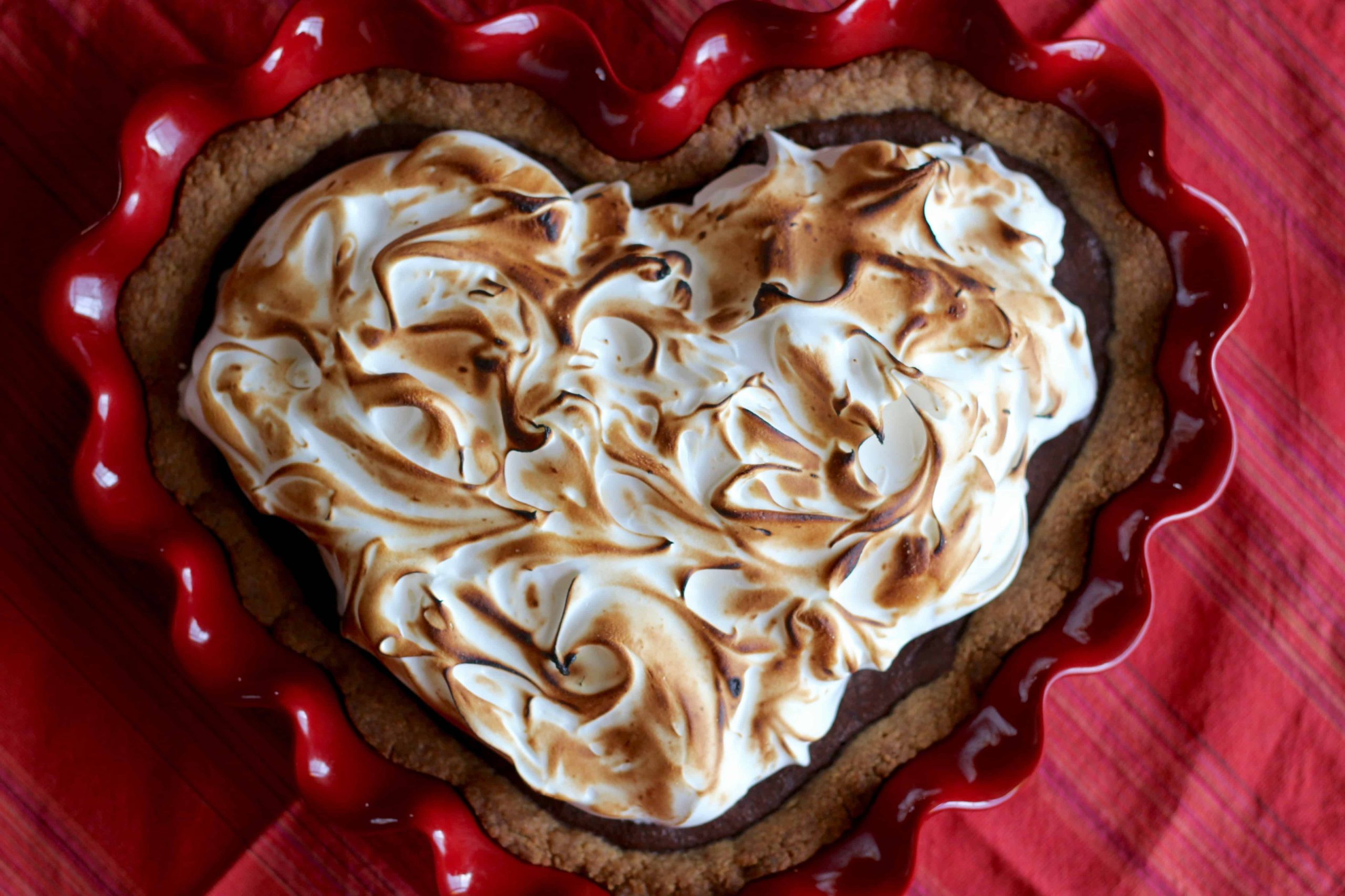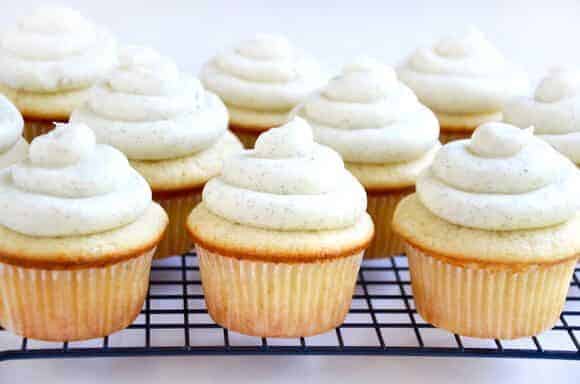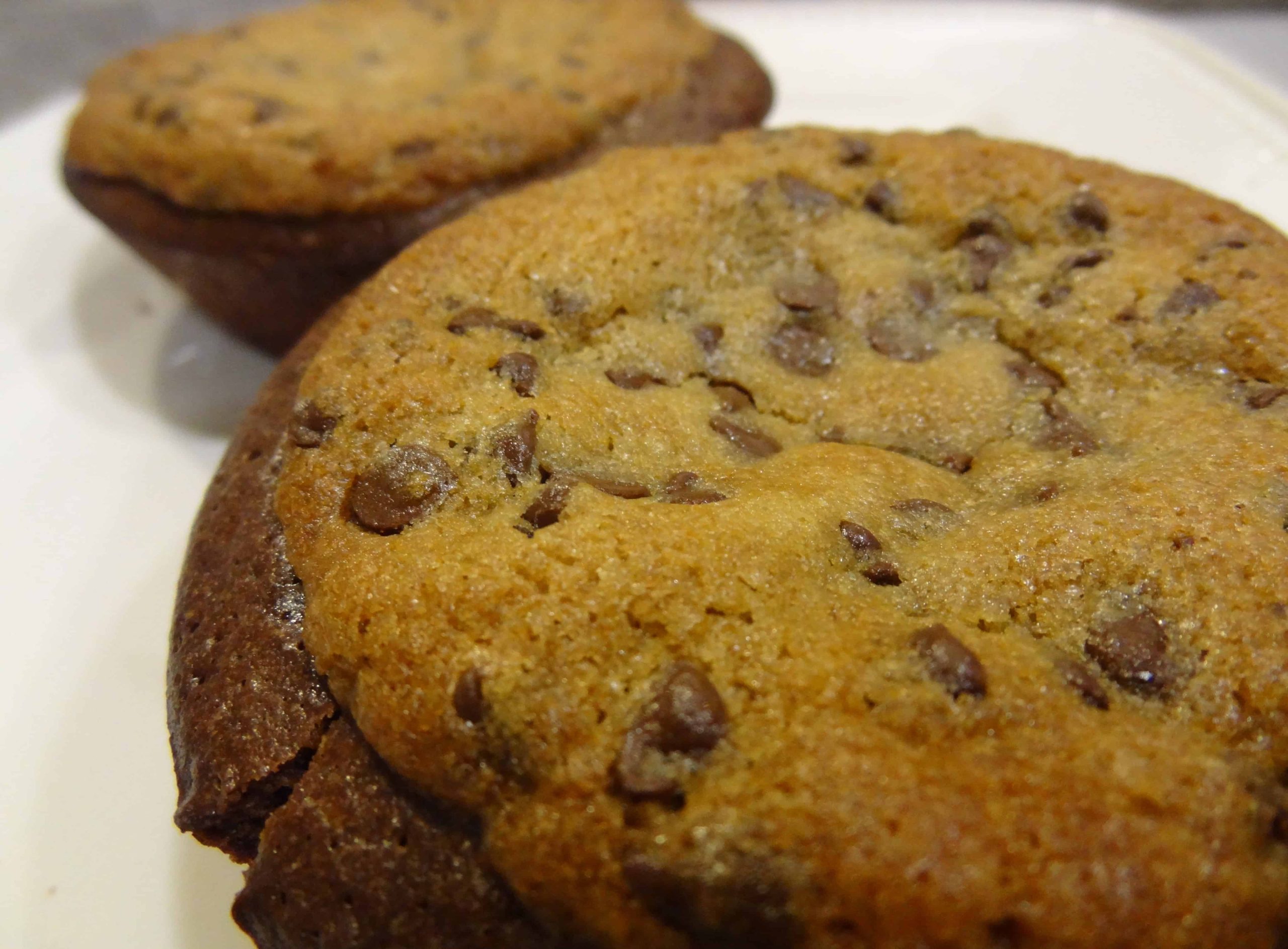
I know. Red velvet is so over. Like, WAY over. But hear me out when I tell you that we don’t have to live this way. We can have red velvet in our lives *and* reserve the right to abstain from food trends du jour, I promise. See, red velvet started as a classic Southern buttermilk-based cake. Some say it was the crimson spawn of the Mahogany Cake, which maybe feels a little better than some random technicolor thing bathed in food coloring. The problem is, it was rife for hijacking. I mean, look. It’s a shocking shade of red compared to practically any other cake in existence; its flavor is ambiguous, yet mysterious enough that everybody wants to try it; and it’s typically covered in glorious swoops of cream cheese frosting, and if you don’t love that, have you asked yourself lately, am I a monster? Red velvet is so photogenic, playful, and when done well, it really is so. very. lovely. But therein lies the problem. Most of the time it’s not done well. In fact, most of the time it’s awful.
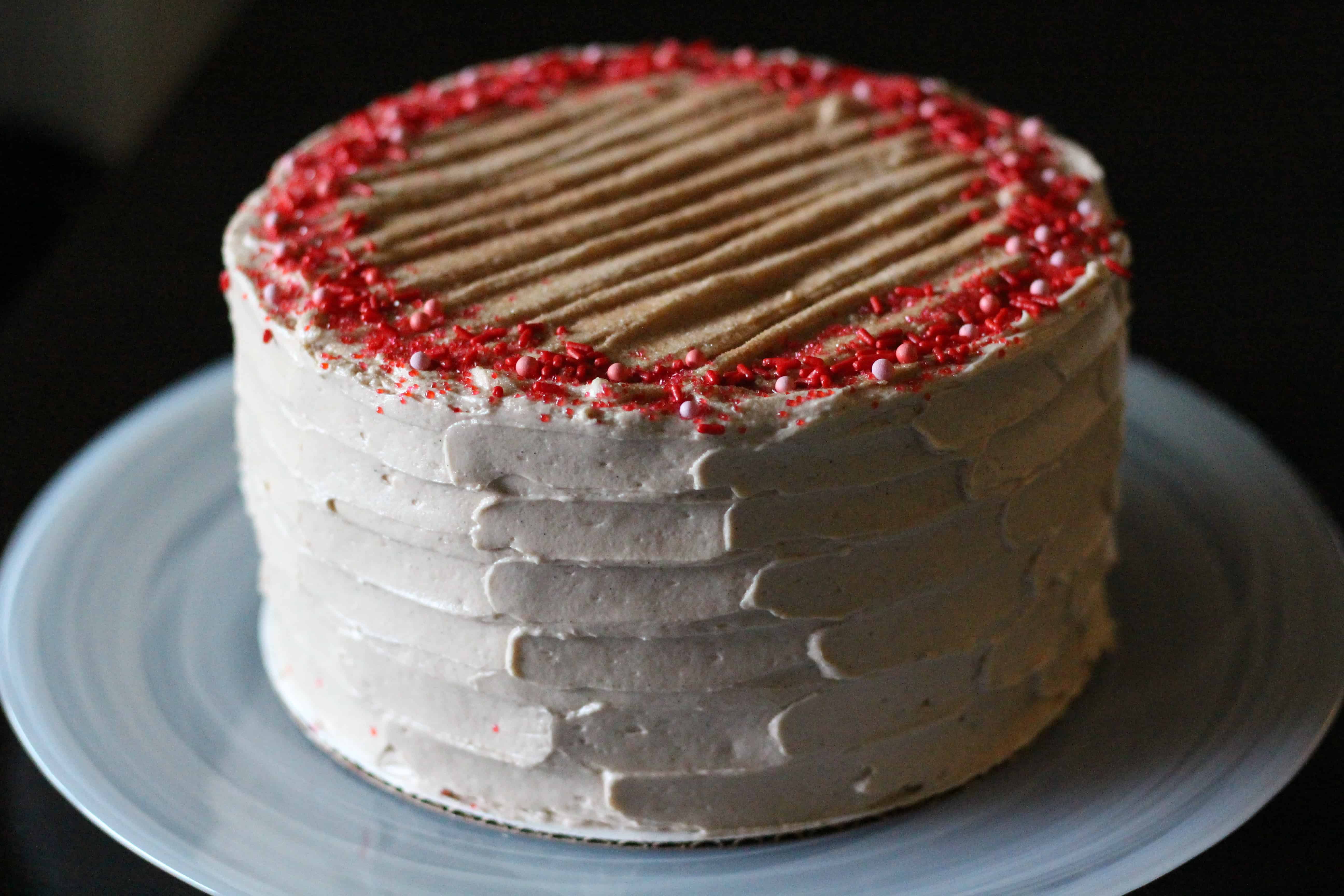
The mostly-thankfully-over trend of red-velvetizing every possible food product has, as per usual, ruined it. Thanks to red velvet frappuccinos, pancakes, brownies, and a plethora of other abominations, everyone now thinks red velvet is terrible. Dear god, now there’s even Red Velvet Bailey’s Irish Cream— when will the madness end?? The thing is, almost none of those things qualify as actual red velvet. To be called “red velvet”, a food item must contain the following: buttermilk, cocoa powder, baking soda, and vinegar. The combination of these four ingredients create the signature red velvet flavor and texture. End of story. If I look at a so-called red velvet recipe, and it does not contain those things, I will just not make it.
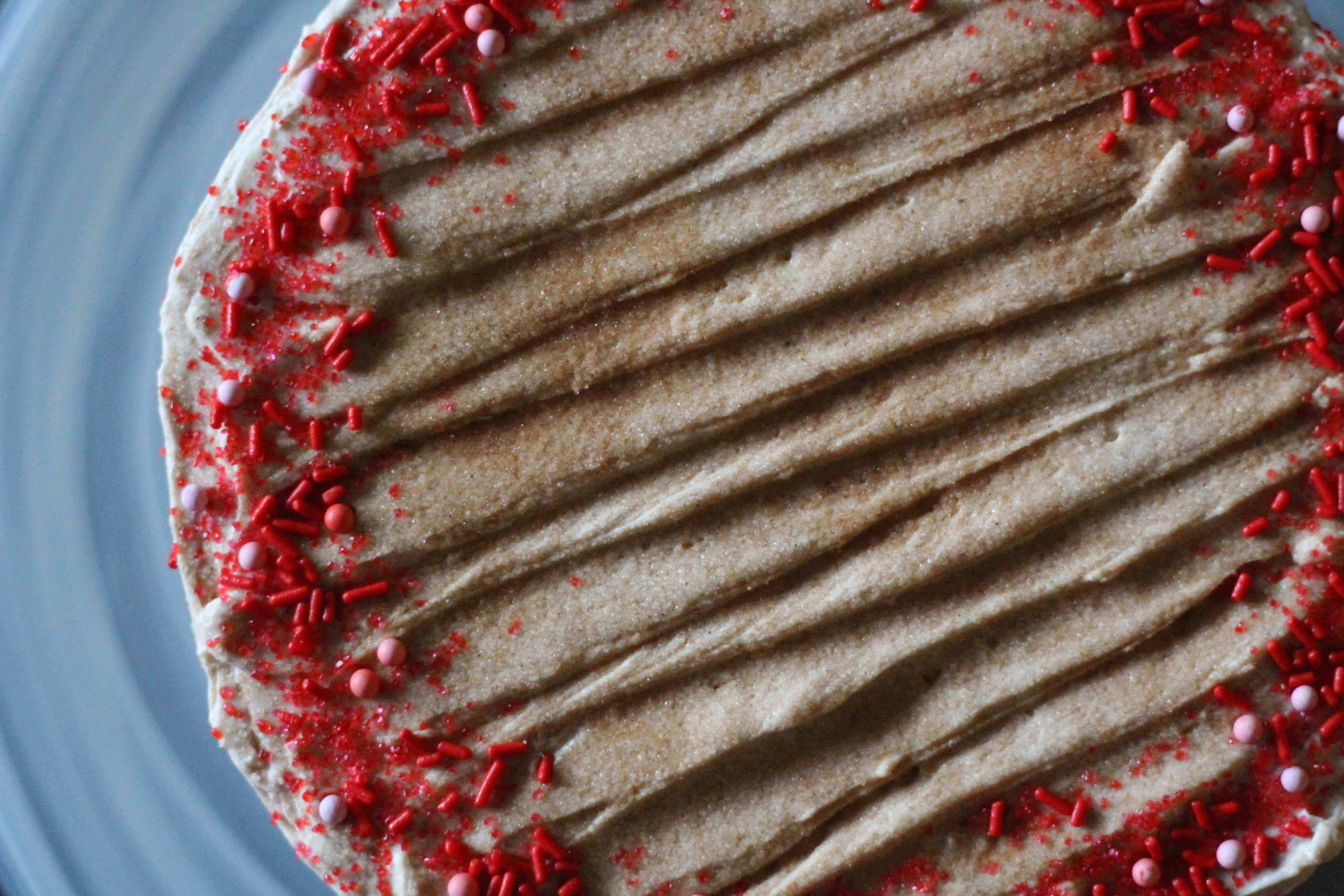
Which brings me to this recipe. I can’t believe I’ve never made BAKED’s Red Hot Velvet Cake before now. This recipe comes from their classic first book BAKED: New Frontiers in Baking, and finallyyy Baked Sunday Mornings, at long last, is tackling it on the baking schedule. What makes it ‘hot’, you ask? BAKED made their name by baking classic American desserts with a twist. The twist here is that instead of traditional cream cheese frosting, the recipe uses BAKED’s regular cooked buttercream, with a hint of cinnamon. It gives the cake a smidge of spicy heat that a regular red velvet cake does not have.
Now, I do realize that I just said above that red velvet is sacred and you don’t mess with it; I meditated long and hard about this recipe (maybe that’s why I never made it before now?), given that cream cheese is unmistakably the traditional frosting. However, what convinced me to make it as written is that if you look at that link for the Mahogany Cake above, the original frosting was quite similar to BAKED’s frosting! It’s a cooked buttercream, and for years I didn’t know where they came up with this bizarro frosting that is made with flour/cream/milk, but it is actually called ermine frosting. So this recipe also solved a long-standing mystery for me about BAKED’s frosting!
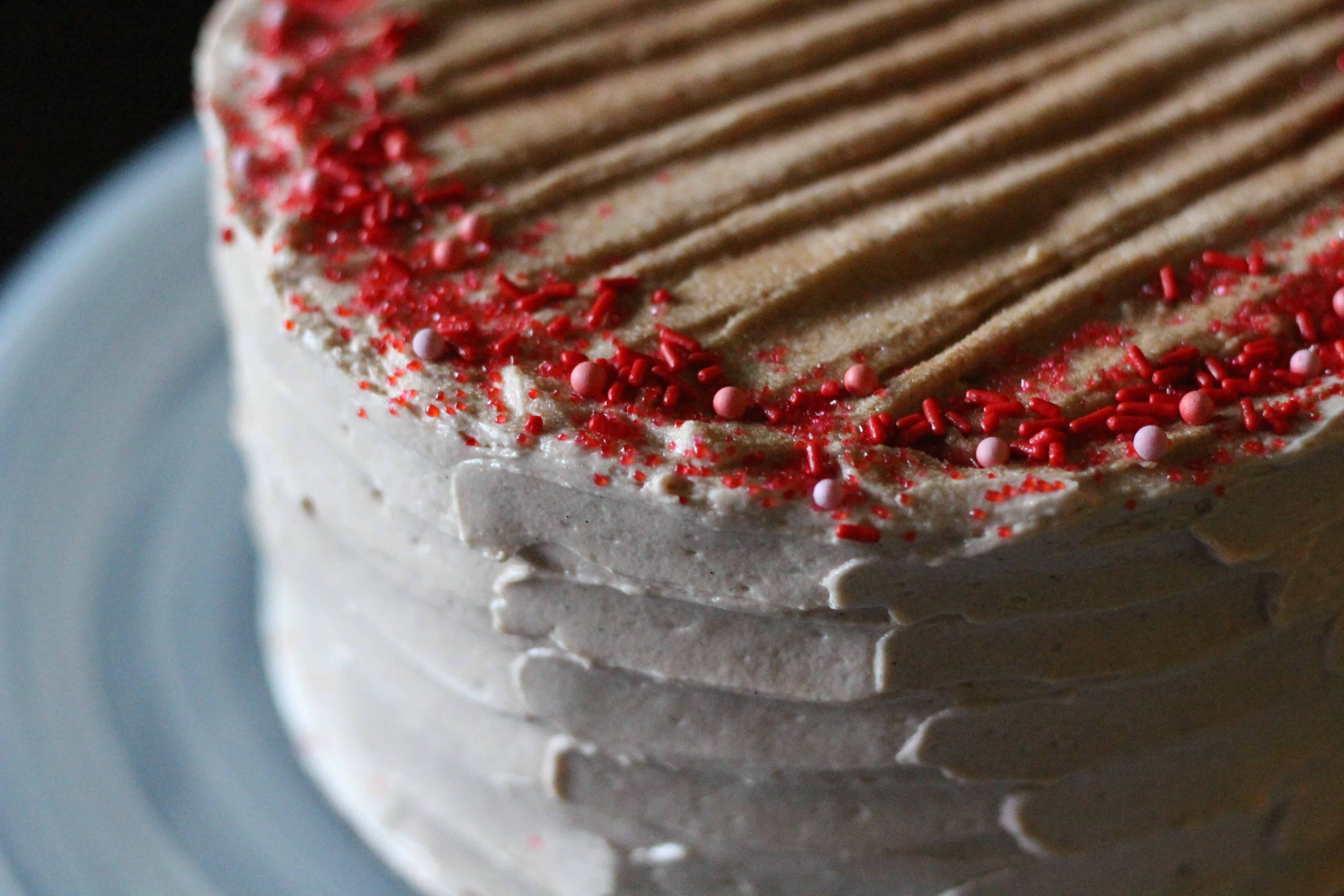
The cake batter here is a little different than most other BAKED cakes, but it should be because of the specific red velvet ingredients; again, this is not simply a red-colored cake. I was however surprised that my creamed butter/shortening/sugar mixture was weird. It was like a thick paste that stayed pressed up against the side of the mixer bowl, despite my efforts to scrape the bowl repeatedly and adjust the paddle attachment to make sure it was passing as close as possible to the bowl. The mixture is supposed to be “light and fluffy” like a typical creamed batter, so I was perplexed. I went so far as to bust out my hand mixer to further beat the mixture, but it never really smoothed out– I got fluffy crumbs (and scarred my stand mixer bowl with the markings of my hand mixer beaters :(. ) Anyway, I moved on and added the rest of the ingredients: eggs, dry ingredients (cake flour and salt), mixture of cocoa powder/red coloring/boiling water, then the final addition of baking soda and vinegar. The batter looked smooth and emulsified, except for a few flour lumps that I hoped would get worked out.
The cakes baked beautifully with flat tops in 30 minutes, though there were a number of flour lumps, but fortunately they all sunk to the bottom of the baked cakes, so I was able to pick them out. I tend to be lax about sifting my flour, but I actually did this time, though I had prepped it the night before and didn’t re-fluff it right before adding it to the batter, which apparently I should’ve done.
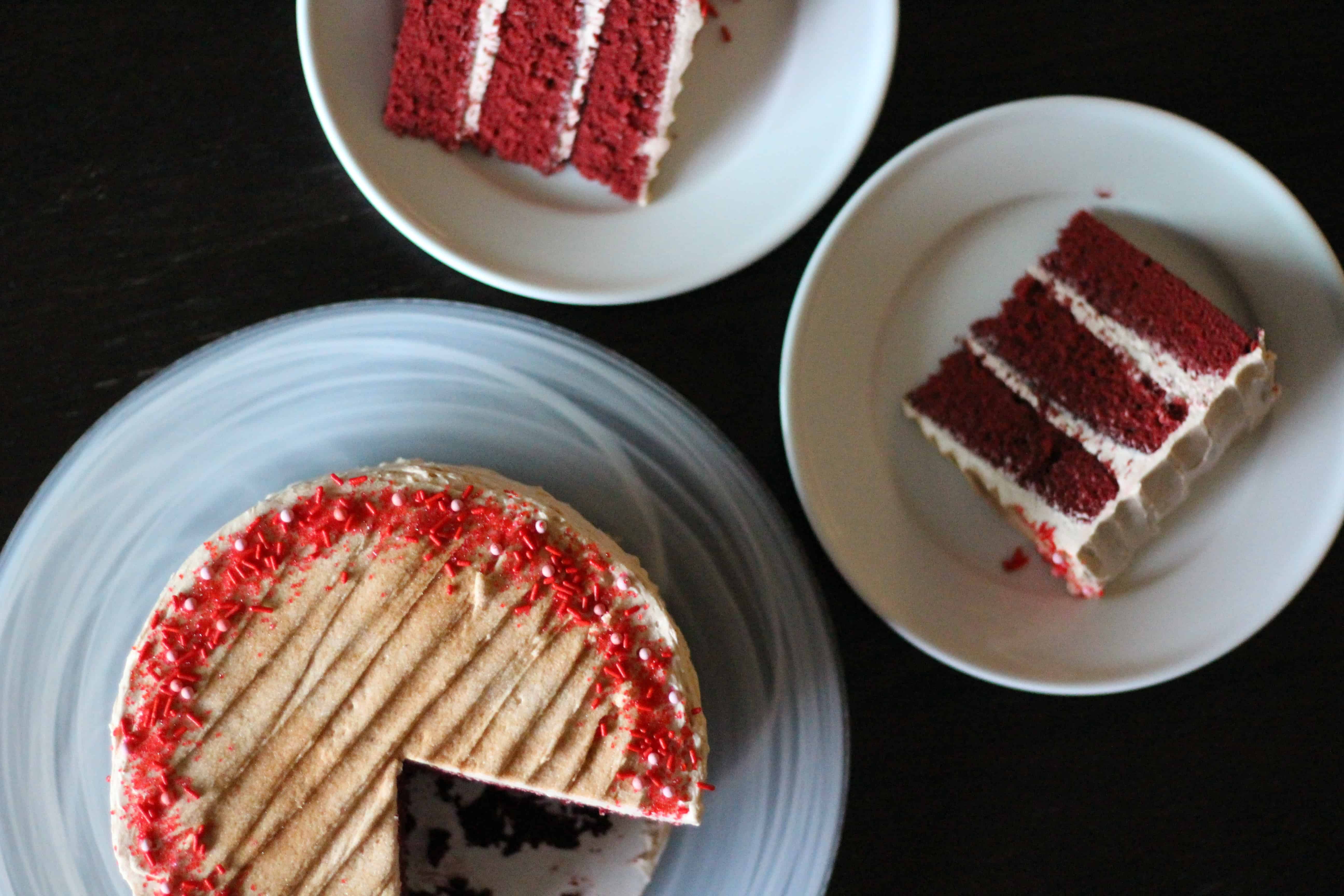
This cake taught me that I can never take BAKED’s cooked frosting for granted. It took me a long time to get to a point where it came out consistently well, and nowadays I don’t stress too much about it. Buuuut… once in a while I get complacent and I’m swiftly reminded of how delicate this mixture is. It is the drama queen of homemade frosting in my opinion. The butter MUST be “cool, but not cold” in order to be properly incorporated into the cooked frosting base (sugar, flour, milk, and cream cooked to a thick, bubbly mixture, then beaten to room temperature in the mixer before adding the butter). If the butter is too warm, the frosting will be soupy; too cold and it will be greasy and separated. Cool butter, on the other hand, yields a heavenly, voluminous cloud of fluff that pairs beautifully with all of BAKED’s delicious cake flavors. When I made this batch, I was in a hurry to get a bunch of things done in the kitchen that evening, and in my haste to move things along, I didn’t realize that the butter wasn’t ready (too cold) until the moment I needed to start adding it. I added the warmest pieces, then gently warmed the bottom of the bowl over a low stove burner repeatedly; I could tell the frosting would be separated. This would be a rescue job for sure… THIS WAS NOT A DRILL. But! I decided to just keep mixing it on medium-high speed for a while longer… Lo and behold, the frosting got its life together without my needing to reheat/chill it. I was thrilled that all it took was patience! I will say that it wasn’t my smoothest batch of this frosting because I beat it for several minutes, but 100% usable. Also wicked delicious with the addition of cinnamon and vanilla bean paste!

The cake was beautiful– tight, tender red crumb with silky frosting. Instead of the prescribed Red Hot candies for decorating (which I don’t like), I sprinkled the top of the cake generously with cinnamon-sugar and a variety of red sprinkles around the edge. I liked the cinnamon frosting okay, but… I genuinely felt that red velvet needs cream cheese. I don’t know if it’s because my taste buds expect the sweet tanginess against the red velvet cake flavor, but I missed it. I would probably try a compromise going forward: cream cheese frosting spiced with cinnamon. In other words, the best of both worlds. Find the recipe for this spiced-up Red Hot Velvet Cake with Cinnamon Buttercream at Baked Sunday Mornings! 🙂
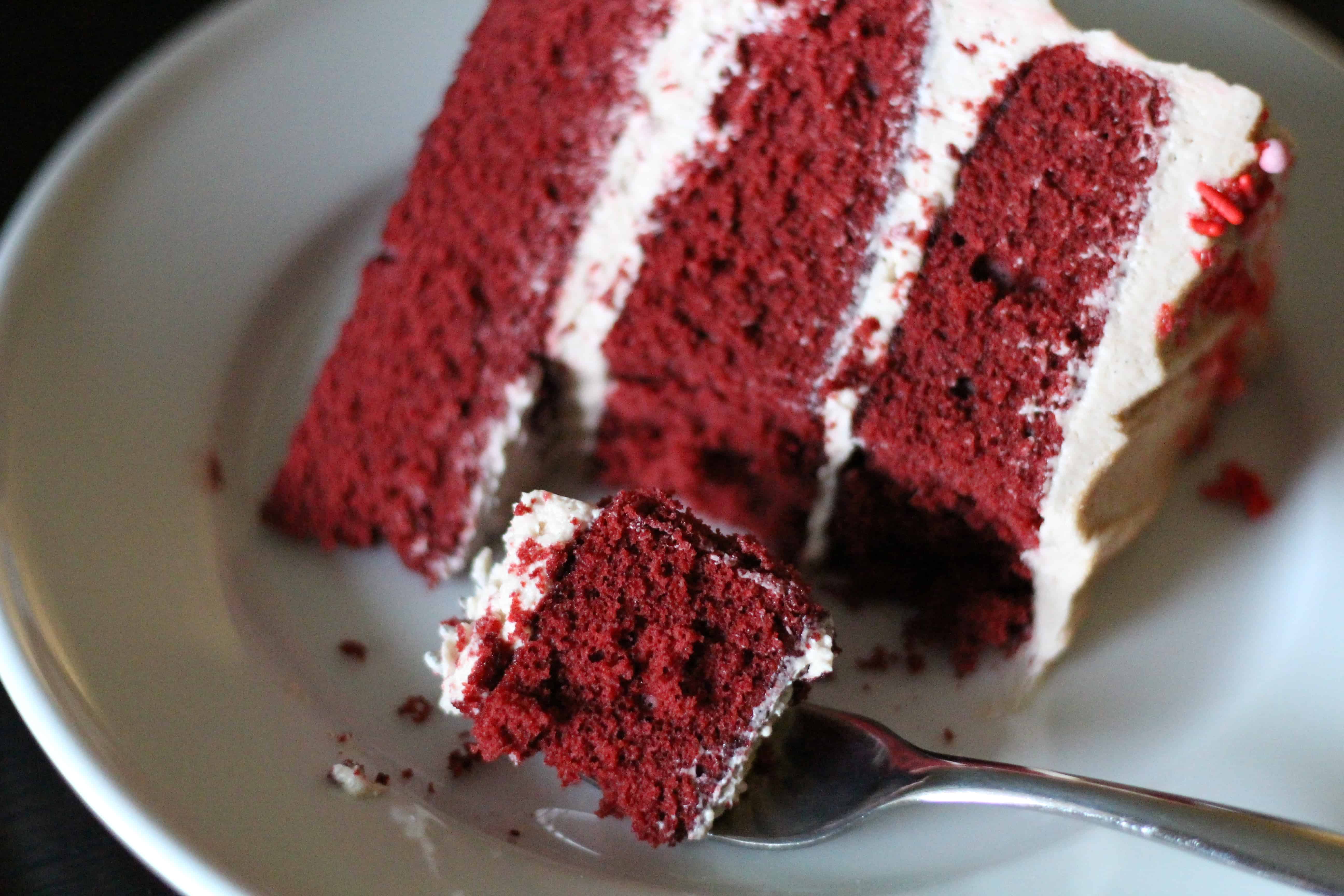
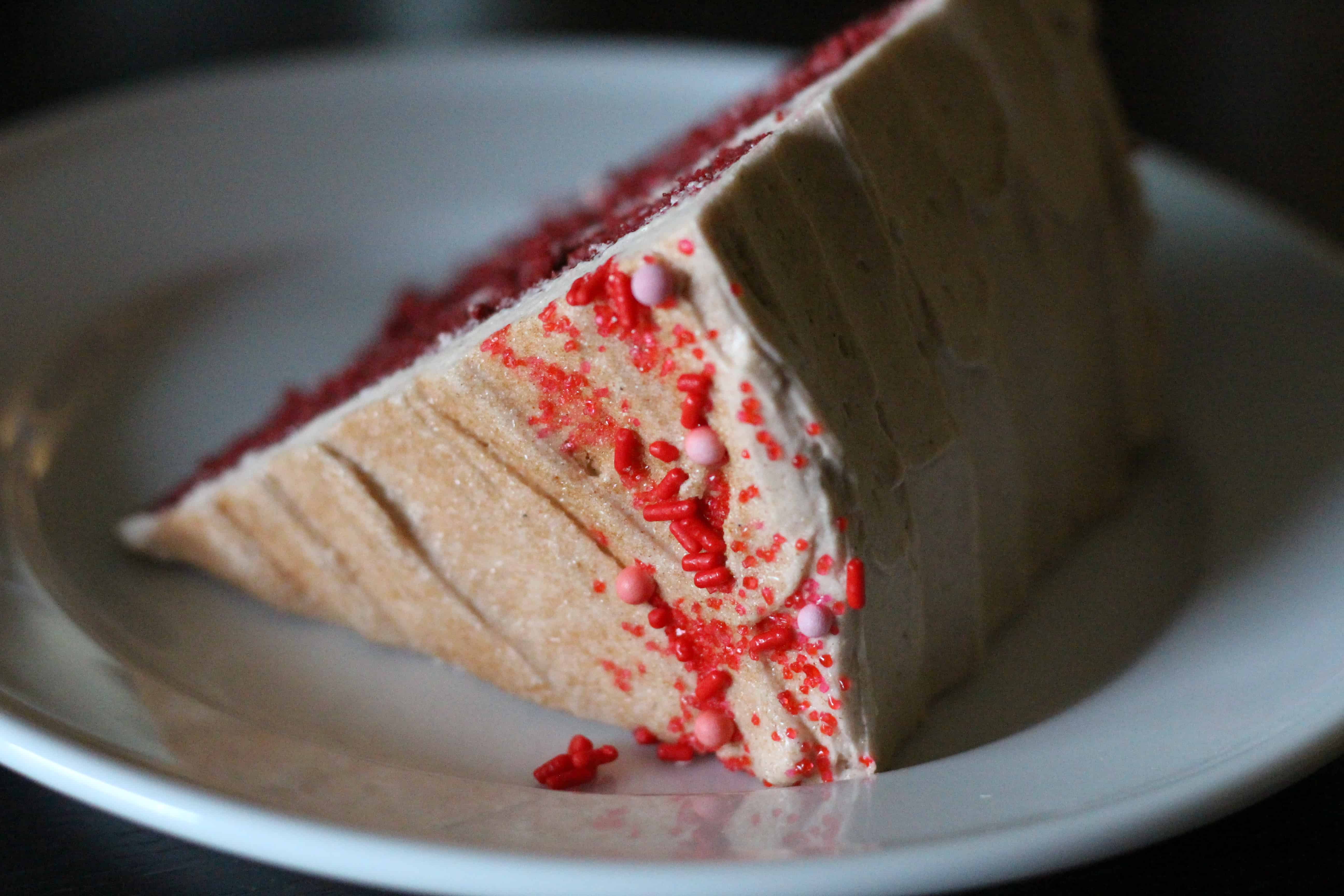
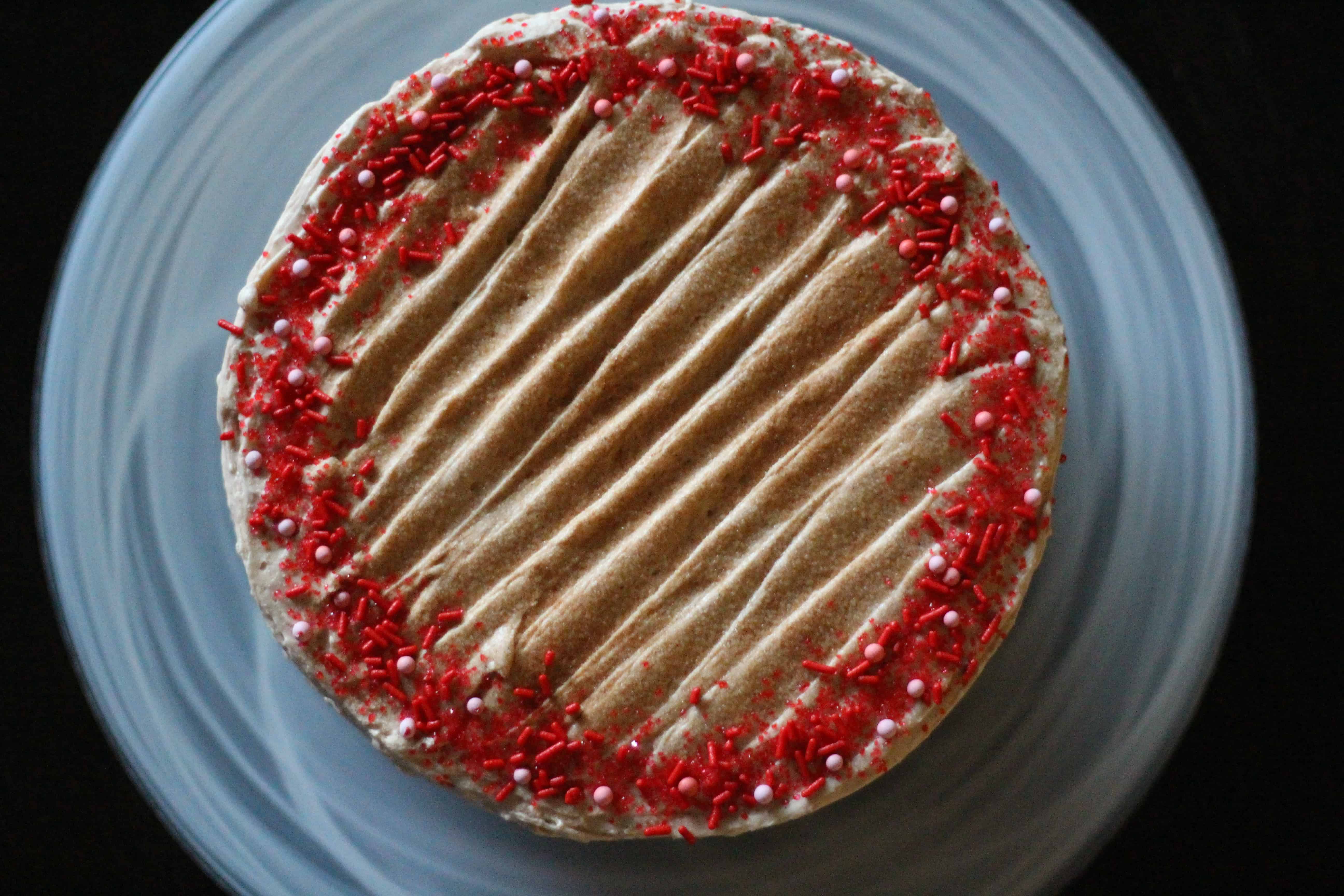
© Dafna Adler & Stellina Sweets, 2019.


